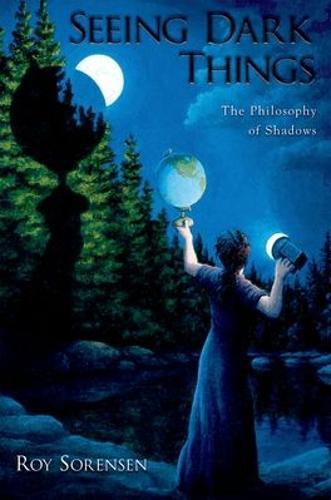Overview
If a spinning disk casts a round shadow does this shadow also spin? When you experience the total blackness of a cave, are you seeing in the dark? Or are you merely failing to see anything (just like your blind companion)? Seeing Dark Things uses visual riddles to explore our ability to see shadows, silhouettes, and black birds--plus some things that are only metaphorically ""dark"" such as holes. These dark things are anomalies for the causal theory of perception which states that anything we see must be a cause of what we see. This orthodoxy successfully explains why you see the front of this page rather than its rear. However, the causal theory has trouble explaining how you manage to see the black letters on this page. The letters are made visible by the light they fail to reflect rather than the light they reflect. Nevertheless, Roy Sorensen defends the causal theory of perception by treating absences as causes. His fourteen chapters draw heavily on common sense and psychology to vindicate the assumption that we directly perceive absences. Seeing Dark Things is philosophy for the eye. It contains fifty-nine figures designed to prompt visual judgment. Sorensen proceeds bottom-up from observation rather than top-down from theory. He regards detailed analysis of absences as premature; he hopes a future theory will refine the pictorial thinking stimulated by the book's riddles. Just as the biologist pursues genetics with fruit flies, the metaphysician can study absences by means of shadows. Shadows are metaphysical amphibians with one foot on the terra firma of common sense and the other in the murky waters of non-being. Sorensen portrays the causal theory of perception's confrontation with the shadows as a triumph against alien attack--a victory that deepens a theory that resonates so strongly with common sense and science. In sum, Seeing Dark Things is an unorthodox defense of an orthodox theory.
Full Product Details
Author: Roy Sorensen (Professor of Philosophy, Professor of Philosophy, Dartmouth College)
Publisher: Oxford University Press Inc
Imprint: Oxford University Press Inc
Dimensions:
Width: 21.10cm
, Height: 2.50cm
, Length: 14.70cm
Weight: 0.482kg
ISBN: 9780195326574
ISBN 10: 0195326571
Pages: 328
Publication Date: 17 January 2008
Audience:
College/higher education
,
Undergraduate
,
Postgraduate, Research & Scholarly
Format: Hardback
Publisher's Status: Active
Availability: To order

Stock availability from the supplier is unknown. We will order it for you and ship this item to you once it is received by us.
Reviews
Sorensen is an extraordinarily fertile and imaginative philosopher, drawing widely on philosophy, physics, biology and vision science to mine his chosen quarry. His arguements, anecdotes and examples are always engaging. Add them to his effortless style and you have a rare commodity - a book of serious philosophy that many non-professionals will enjoy Ian Phillips, Times Literary Supplement Seeing Things is a marvellous book...Sorensen has a remarkable gift for uncovering puzzles and raising hard questions. Whether or not one agrees with his conclusions is far less important than the philosophical insight one gains by reflecting on his riddles. Ian Phillips, Times Literary Supplement Sorensen's book is certainly fascinating and richly thought-provoking... he argues carefully and clearly in favour of his key claims, all of which merit very serious consideration, even if they sometimes provoke one to construct and defend alternative views. That, however, is surely the hallmark of the very best kind of philosophy writing. Seeing Dark Things is a model of this kind. E.J. Lowe, Asian Studies
Author Information
Roy Sorensen is a Professor of Philosophy at Dartmouth College. He is also the author of A Brief History of the Paradox, Vagueness and Contradiction, and Thought Experiments.



